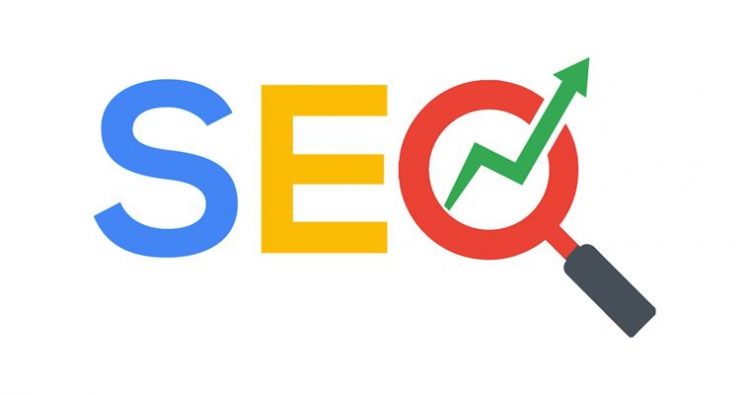
Technical SEO refers to making your website appear on search engines. By making your web pages visible to search engines, you can boost your website's rankings and traffic. Search engines crawl web pages looking for relevant content. This is why technical SEO can help them trust your site. Moreover, search engine optimization also gives search algorithms more reasons to trust your website. Here are some techniques for technical SEO. To start, avoid duplicate content. Next, use an XML sitemap and canonical URLs.
Duplicate content
Many people know that duplicate content is bad, but don’t know why. Search engine optimization professionals don't know why duplicate content is bad. This is a problem as it makes it difficult to follow their recommendations. This article will cover the basics of duplicate contents and how it can hurt SEO. These are just a few examples of how duplicate content can harm your website.
Mobile optimization

Mobile technical SEO includes a number of essential aspects. For starters, you must make sure your site is encrypted via HTTPS. Google will flag you site as insecure if your site is not encrypted via HTTPS. Header tags are an important part of mobile technical SEO. These tags highlight content hierarchy and tell search engines which content is essential. It improves your website's crawlability by using header tags. These tips will help you optimize your mobile site.
Sitemap for XML
An XML sitemap is an incredibly useful SEO tool. XML sitemaps make it easy to keep search engines up-to-date on your most important pages. Google will love structured markup. This makes your website easy to index. This helps them display rich snippets and increase your website's click-through-rate. This will be particularly beneficial if your website has many pages.
URLs that are Canonical
Using canonical URLs can improve your site's search engine optimization, especially if you have multiple web pages with different URLs. You should only use one of these canonical URLs for your site. Google views them as duplicate content, and they are ignored. This can be achieved by adding canonical tags to pages, but only for HTML files and pages. An HTTP header can also be used to specify other documents that are not HTMLML.
Security

Digital marketers may be well aware of the importance of website security for SEO. But what is the effect of website security on your ranking? The best way to improve your rankings is to pay attention to what users want and not what Google wants. This is the basis of any SEO strategy. So, how can you increase the security of your site? These are the steps you can take to increase your website's security.
FAQ
How can I create a SEO strategy?
It is important to understand your goals and the best way to reach them. This allows you organize your content around those goals.
The second step in the process is to work on your keywords. Doing keyword research can give you insights into what people are looking for by analyzing the terms they use. You can then write articles about those topics by using this information.
After you have written your articles, make sure to include your target keywords. You should optimize every article by including images and videos. If possible, you should also link to other related sites.
Now it's time for you to optimize the content that you have written.
Link Building can improve my rankings
Link building is the process of creating high-quality backlinks to your website. It is essential that you ensure the websites linking to you are relevant to your business. The better the link, the more authoritative and unique it is.
What is an SEO strategy?
An essential part of any website is its content. Search engines won't rank your site high enough if you don't include relevant and helpful information.
An SEO campaign optimizes your site by getting links from other websites back to yours. It also includes social media SEO, which is the use of Twitter, Facebook, LinkedIn and LinkedIn to increase brand awareness and drive traffic.
These links will bring more people to your site and increase your ranking. SEO campaigns are focused on building quality links back from your site to ensure that Google recognizes your website as valuable.
What is On-Page Search Engine Optimization?
On-page SEO refers to the actions you take within your website to help it rank higher in search engines. On-page optimization includes site architecture, page titles and meta tags. Image alt text is also included. Off-page SEO is activities that are not related to your website and will help improve its rankings. These activities include backlinks and social media shares.
Statistics
- And 90%+ of these backlinks cite a specific stat from my post: (backlinko.com)
- : You might have read about the time that I used The Content Relaunch to boost my organic traffic by 260.7%: (backlinko.com)
- A 62.60% organic traffic boost to that page: (backlinko.com)
- 64% of marketers actively create SEO campaigns because they help hit multiple key performance indicators (KPIs), including increasing traffic, helping your site rank for relevant keywords, improving your conversion rate, and much more. (semrush.com)
- Deleting those 10k pages is one of the main reasons that he improved his site's organic traffic by nearly 90%: (backlinko.com)
External Links
How To
How do I set up my first blog?
It's simple! WordPress is a great tool to create a blog. The user can modify the look and feel of their blog easily by adding themes and changing fonts and colors. They can also create plugins that will automatically alter certain aspects of the website according to visitor activity.
WordPress.org offers many templates for free and premium templates that are more expensive. Premium templates come with additional features such as extra pages, extra plugins, and advanced security.
Once you have downloaded the template you need to sign-up for a free account. This will allow you to upload files and maintain your blog. Many hosts offer free accounts, but there are often restrictions on how much space you can use, how many domains you can host and how many emails you can send.
If you plan to use more domain names, you will also need to purchase separate email addresses. This service may be charged by some hosts.
You may be wondering why anyone would pay for a blog to be hosted online if you are new to blogging. The majority of hosts offer unlimited storage so files aren't deleted even if accidentally deleted.
Many hosts allow users to host multiple domains. This means you can have multiple sites with the same hosting package. You don't need multiple email addresses and can manage all your sites through the one interface.
Some hosts offer social media sharing buttons that allow visitors to quickly share their posts on the web.
Many hosting providers offer tools that allow you to manage your blog. You can check the performance stats for your site, view how many visitors each article has received, and even compare your traffic to other blogs.
These tools can make managing a blog easier and more effective, so you should look into them before choosing a hosting package.
To sum up:
-
Select a topic that is relevant to your business.
-
Create engaging content;
-
Optimize your site using SEO techniques;
-
Promote your site using social media channels;
-
Keep an eye on your statistics to see if you can make any changes.
-
Last but not least, make sure to keep your blog updated.
In summary, you need to create and promote good content and then track its success.